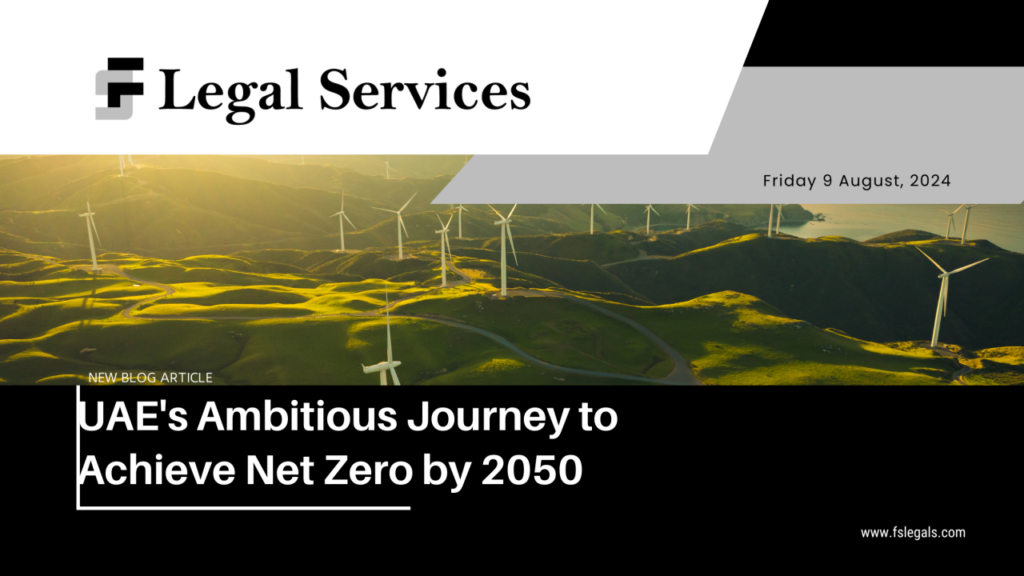
In 2017, the UAE took a significant leap in its energy sector by launching the UAE Energy Strategy 2050. This comprehensive plan aimed to balance supply and demand with environmental obligations while fostering an economic environment conducive to growth. Recognizing the dynamic changes in the energy sector and the emergence of low-emission technologies, the UAE has updated this strategy to align with the objectives of the Paris Agreement, setting ambitious goals for 2030 and 2050 to achieve net zero emissions.

Key Milestones in the UAE Energy Strategy 2050
2017: Launch of the UAE Energy Strategy 2050
The UAE Energy Strategy 2050 was introduced as the first unified energy strategy in the country. It marked a quantum leap in the UAE’s approach to energy, focusing on creating a sustainable balance between energy supply and environmental stewardship.
2020: Operation of the First Nuclear Power Reactor
In 2020, the Barakah nuclear power plant began operations, symbolizing the UAE’s commitment to diversifying its energy sources. The plant’s second and third reactors came online in 2022 and 2023, respectively, further bolstering the country’s clean energy capacity.
2021: Launch of the Hydrogen Leadership Roadmap and Net Zero Initiative
The UAE launched its Hydrogen Leadership Roadmap at COP26 in 2021, underscoring its dedication to becoming a leader in hydrogen energy. Additionally, the UAE Net Zero by 2050 Strategic Initiative was introduced, setting the national goal of achieving net zero emissions by 2050.
2022: Major Developments
- Conversion of Hassyan Power Complex: The UAE transitioned the Hassyan Power Complex from clean coal to natural gas, significantly reducing its carbon footprint.
- Updating the Energy Strategy: The UAE began updating its Energy Strategy 2050 to incorporate the latest advancements in low-emission technologies and address the evolving energy landscape.
2023: Focus on Sustainability and Global Leadership
- Year of Sustainability: Declared by H.H. Sheikh Mohamed bin Zayed Al Nahyan, 2023 was marked as the Year of Sustainability under the theme ‘Today for Tomorrow.’
- Hosting COP28: The UAE will host the 28th session of the Conference of the Parties (COP28), showcasing its leadership in global climate action.
Ambitions for 2030
The updated strategy outlines several ambitious goals for 2030:
- Reducing Emissions: Targeting net zero emissions from the water and energy sectors by 2050.
- Eliminating Clean Coal: Removing clean coal from the energy mix to meet climate neutrality goals.
- Increasing Efficiency: Enhancing energy consumption efficiency by 42-45% compared to 2019.
- Boosting Renewable Energy: Tripling the share of renewable energy and increasing installed clean energy capacity from 14.2 GW to 19.8 GW.
- Economic Impact: Creating 50,000 new green jobs and achieving AED 100 billion in financial savings, with investments ranging between AED 150 and 200 billion to meet energy demands and sustain economic growth.
The Path to 2050
By 2050, the UAE aims to:
- Achieve Net Zero Emissions: Ensuring long-term sustainability and climate leadership.
- Innovate and Lead: Continuously advance in renewable energy technologies and position the UAE as a global leader in sustainable energy.
- Community Benefits: Improve air quality and public health outcomes, contributing to a higher quality of life.
Conclusion
The UAE’s strategic initiatives and milestones underscore its unwavering commitment to sustainable energy and climate action. The journey includes significant investments in renewable energy, advancements in nuclear power, and innovative projects to ensure a balanced and environmentally friendly energy future.
For more details, refer to the Updated UAE Energy Strategy 2050.